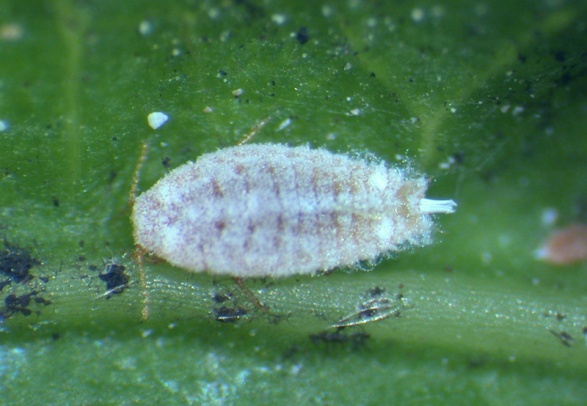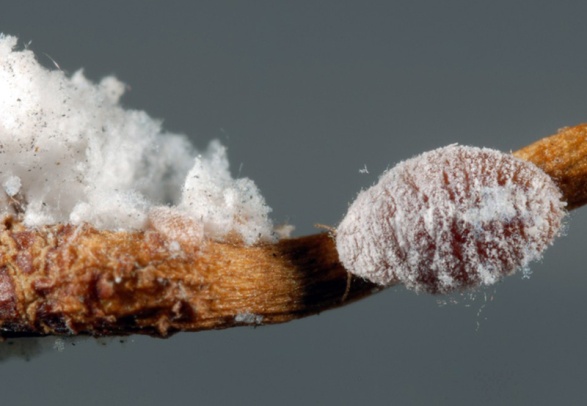
Pink hibiscus mealybug
Maconellicoccus hirsutus (Green)
(Insecta: Hemiptera: Pseudococcidae)
Adult pink hibiscus mealybugs are 3 mm long. Females are wingless, have a pink oval body, and are covered in white wax. Males are reddish brown with one pair of wings and two long waxy “tails.” Nymphs resemble smaller versions of adult females.
The life cycle of the pink hibiscus mealybug takes 24 to 30 days, and more than 10 overlapping generations occur per year. After it deposits a waxy egg sac containing up to 600 eggs, the adult female dies. The pink eggs hatch and develop into “crawlers,” or first instars. Female nymphs undergo three instars, and male nymphs complete four.
Pink hibiscus mealybug is common in the tropical and subtropical regions of Africa, Southeast Asia, and northern Australia. It was detected in Florida in Broward County in 2002 and is expected to spread quickly throughout the state.
Pink hibiscus mealybug is polyphagous — it feeds on a variety of plants, including at least 215 genera of the Cucurbitaceae, Malvaceae, Solanaceae, Fabaceae, Brassicaceae, and Arecaceae families. Its saliva contains toxins that cause plant deformation and death. All life stages secrete honeydew that promotes sooty mold development.
Images
To
save the Web-optimized images shown below to your hard drive:
PC users: right click to "Save Picture (or Image) As..."
Mac users: click and drag to your desktop.

Pink hibiscus mealybug, Maconellicoccus hirsutus (Green), on a citrus leaf
(Photographer: Lyle Buss, University of Florida)

Pink hibiscus mealybug, Maconellicoccus hirsutus (Green), on an aerial root of ficus
(Photographer: Lyle Buss, University of Florida)